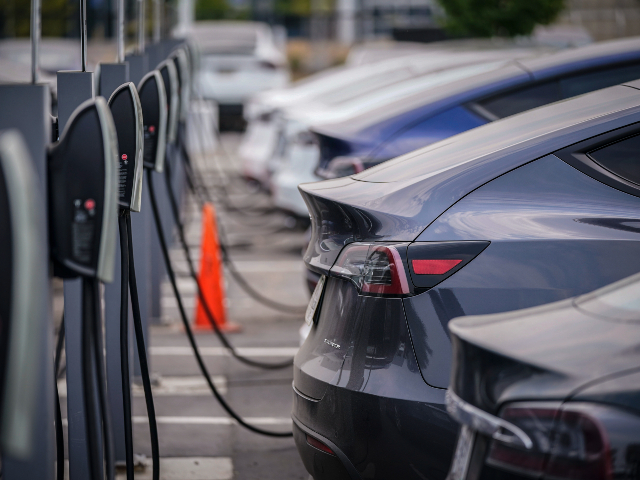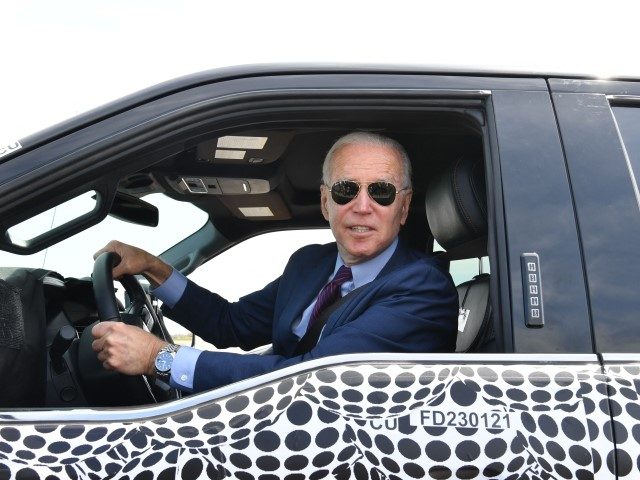White House announced a series of executive actions this month to create a national charging network for electric vehicles, even as EV owners and reviewers have continued to note short travel ranges, long charging times, and difficulty finding charging stations.
A February 15 White House press release indicated that Tesla Motors will “open a portion of its U.S. Supercharger and Destination Charger network to non-Tesla EVs, making at least 7,500 chargers available for all EVs by the end of 2024,” including at “least 3,500 new and existing 250 kW Superchargers along highway corridors.”
The release also noted Biden’s 2022 infrastructure spending package had allocated $7.5 billion to develop EV charging capabilities.
However, some consumers and industry observers have expressed discontent about the state of EV charging.

A group of Tesla cars line up at charging stations at a dealership in Littleton, CO, Aug. 23, 2020. (AP Photo/David Zalubowski, File)
Steve Hammes, an automotive critic who has a popular YouTube channel, told ABC News he had concerns about his daughter making trips to and from her college in her Hyundai Kona Electric sport utility vehicle:
“We’re going through the planning process of how easily Maddie can get from Albany to Gettysburg [College] and where she can charge the car,” Hammes told ABC News. “It makes me a little nervous. We want fast chargers that take 30 to 40 minutes — it would not make sense to sit at a Level 2 charger for hours. There isn’t a good software tool that helps EV owners plan their trips.
Tony Quiroga of the publication Car and Driver told ABC News that the difficulty of finding charging stations is exacerbated by the range limitations seen in some EV models.
“Longer trips bring up flaws with EVs. People are leery of taking them on long trips — that’s why older EVs don’t have 40,000 miles on them,” he said.
Another automotive YouTuber, Tyler Hoover, conducted an experiment in September to test Ford’s electric truck mode, the Lightning F-150, on its range and towing power, as Breitbart News noted.
“If a truck towing 3,500 pounds can’t even go 100 miles — that is ridiculously stupid,” Hoover said. “This truck can’t do normal truck things. You would be stopping every hour to recharge, which would take about 45 minutes a pop, and that is absolutely not practical.”
Similarly, a Motor Trend review noted the truck’s “limited towing range” following some performance tests.
The White House said its goal is to nearly quadruple the number of publicly available chargers from 130,000 to 500,000 by the year 2030.
The press release also noted the Department of Transportation will require that all chargers funded by its National Electric Vehicle Infrastructure program maintain 97 percent uptime reliability, a far cry from the current state of EV charging stations, according to some observers.
“The incentive right now is to get stations in the ground,” automotive journalist John Voelcker told ABC News. “It’s not making sure they actually work.”
You can follow Michael Foster on Twitter at @realmfoster.

COMMENTS
Please let us know if you're having issues with commenting.